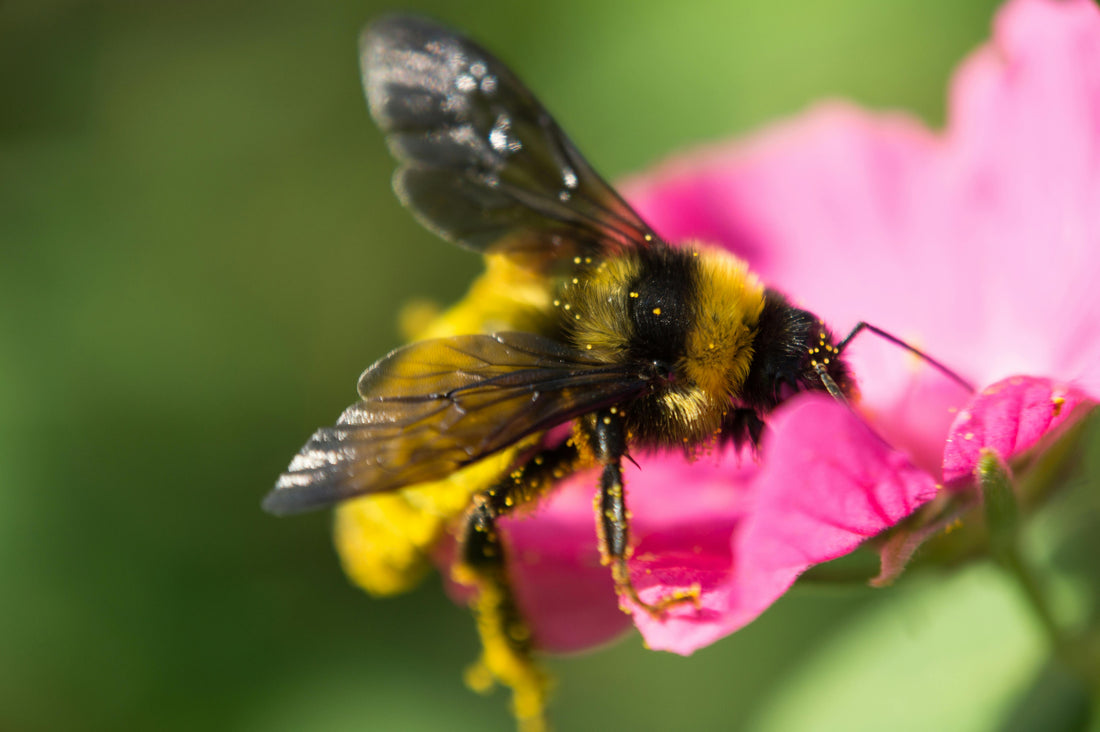Your Favourite Bee of the Bunch
Did you know that the early bumblebee is one of the smallest and prettiest bees?
It’s no wonder why the early bumblebee is one of the most requested bees to talk about from our bee-saving community!
Read on for more early bumblebee facts…
How to Spot One
Male or a Female Early Bumblebee?
Male early bumblebees are more colourful and fluffier than their female counterparts, with a broad band of yellow on their abdomen and behind their heads. They look similar to red-tailed bumblebees, but early bumblebees are much brighter in colour and rounder than their red-tailed friends.
Pollen covered female early bumblebee (left) Male early bumblebee with yellow 'moustache' (right).
Where Can You Find Early Bumblebees?
In gardens, woodlands and towns, these bees can be found early in the spring (hence the name), between March and June.
They are one of our crucial pollinators in the UK for soft fruits like raspberries!
Are Early Bumblebees Solitary or Social?
Social! But unlike honey bees, bumblebees live in smaller colonies of up to 150 individuals.
Fun Facts
- Male early bumbles have little orange tails and yellow ‘moustaches’; how classy!
- They have very short tongues.
- They are also ‘nectar robbers’. This is when they feed from little bitten-out holes in flowers instead of finding the nectar from the standard flower head opening.
- An early bumblebee queen’s favourite flower is Rhododendrons.
- Early bumblebees have the smallest queen bees.
- Some early bumblebees are out and about as early as February!

Rhododendron flower loved by early bumblebees.
Why Do They Emerge So Early?
Early bumblebees emerge earlier than other bees due to their different life cycle.
But we now find many types of bees, like their early friends, coming out from hibernation at odd times. A Swedish research team headed by Lund University have recorded queens flying much earlier than before.
This is due to multiple factors caused by global warming and the change in habitats and surrounding agriculture. The warmer climate is encouraging our bees to wake up at the wrong time!
How Can We Protect Our ‘Early Bird’ Bees this Spring?
We can best support our foraging friends by preserving their environment.
Planting more flowers, leaving areas to grow wild and only mowing at roadsides and paths in the later season will help maintain our bumblebee population. Check out our seed balls in our shop for an easy way to join us in our bee-saving quest. Alternatively, you can pop down to your local garden nursery to pick out some nectar and pollen-rich flowers.
Top Tip: Make sure you get more open flowers so their nectar is easily accessible for short early bumblebee tongues! Shorter flower examples include primula veris, apple trees, coneflowers and crocuses. Don’t worry if you get a mix of long and shorter flowers, as these little vampire-like bees can feed from the bitten holes we discussed earlier!
Thank you for being a part of our wider bee-saving mission here at Beevive. Please write to us if you spot an early bumblebee!



